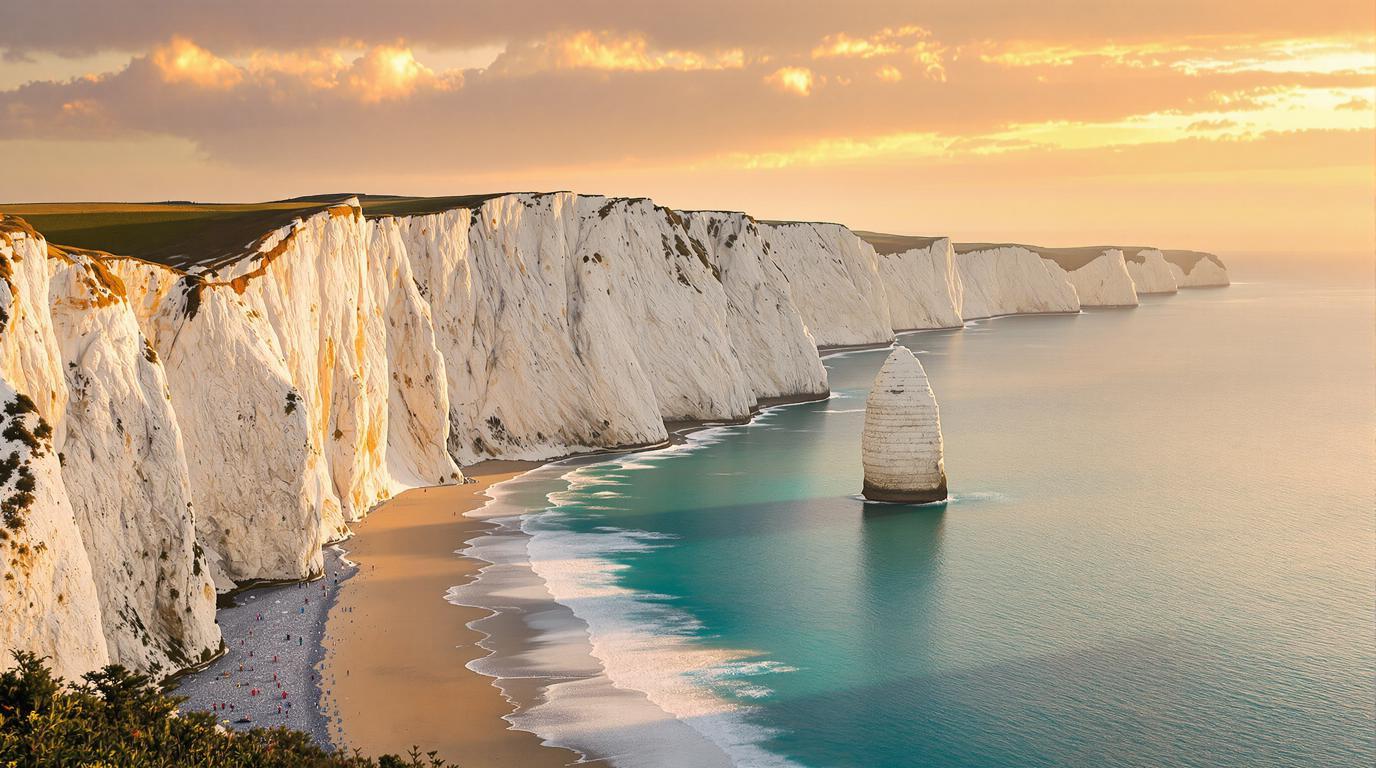Étretat’s dramatic white cliffs have captivated artists for centuries, but this small Norman town holds far more secrets than first meets the eye. Beyond the postcard-perfect views lies a world of hidden caves, artistic heritage, and culinary delights that make this coastal gem one of France’s most rewarding discoveries.
The natural architecture that inspired Monet’s masterpieces
The limestone arches of Étretat aren’t just stunning – they’re geological marvels shaped by millennia of relentless waves. The most famous formations include the Porte d’Aval (Downstream Gate) and the needle-like L’Aiguille Creuse, which rises dramatically from the sea like a stone sentinel. These natural sculptures change character throughout the day as light plays across their surfaces.
Claude Monet captured these cliffs in over 50 paintings, struggling to perfect their ever-changing essence. “These cliffs are difficult,” he once wrote to a friend. “The light transforms them constantly, making them almost impossible to capture completely.”
A hidden literary playground of mystery
The hollow needle formation inspired famed author Maurice Leblanc to create his gentleman burglar character Arsène Lupin, who supposedly hid treasure inside the rock. Today, fans of the novels can visit Le Clos Lupin, Leblanc’s former home turned museum, where the spirit of France’s greatest fictional thief lives on.
Leblanc wasn’t the only artist drawn to Étretat’s dramatic setting. Guy de Maupassant, another literary giant, spent childhood summers here and later immortalized the town in his stories.
Gardens that blend art and nature in surprising harmony
Perched atop the white cliffs, Les Jardins d’Étretat offers a surreal landscape experience unlike anything else in Normandy. These neo-futuristic gardens blend sculptural art with carefully trimmed topiary to create dreamlike vistas that frame the famous arches below.
“We created a space where art and nature have a continuous dialogue,” explains garden curator Maria Solovyeva. “The gardens are living art that changes with the seasons.”
Wild coastal hikes that few tourists discover
While most visitors stick to the main beach and viewpoints, adventurous travelers can discover secluded coves and dramatic perspectives by following the Chemin des Douaniers (Customs Path). This coastal trail once used by tax officers to catch smugglers now offers breathtaking panoramas far from the crowds.
Like Scotland’s remote islands with their dark skies, Étretat’s coastline transforms dramatically at twilight, when the white cliffs glow with soft golden light.
Ancient sea caves accessible only at low tide
Timing is everything when visiting Étretat. As the tide retreats, hidden sea caves emerge at the base of the cliffs. These temporary grottoes, adorned with seaweed and tiny marine creatures, offer photographers extraordinary natural light chambers that disappear hours later under rising waters.
For those seeking more exotic beaches, some islands feature beaches that glow electric blue at night – a stark contrast to Étretat’s more subtle charms.
Norman culinary traditions with ocean views
Étretat’s restaurants excel in showcasing Normandy’s rich culinary heritage. Fresh seafood platters featuring locally harvested oysters pair perfectly with regional apple cider and Calvados. For the complete experience, try a traditional Norman galette – a savory buckwheat crepe filled with local cheeses and ham.
Unlike hidden Maldivian islands with their luxury accommodations, Étretat offers authentic charm at reasonable prices.
Perfect lighting conditions for photographers
Professional photographers favor Étretat for its exceptional lighting conditions. The cliffs act as natural reflectors, creating soft, diffused light that’s ideal for landscape photography. For the most dramatic shots, visit during golden hour when the low sun creates striking shadows across the rock formations.
The coastal scenery rivals even Tasmania’s dramatic orange-bouldered coastlines, though with a distinctly European character.
A town that changes with the seasons
Each season reveals a different Étretat. Summer brings vibrant energy with crowded beaches and bustling cafés. Fall offers moody skies perfect for photographers. Winter transforms the cliffs with frost and dramatic storms, while spring carpets the headlands with wildflowers.
While some travelers prefer Estonia’s wilderness for stargazing in complete silence, Étretat offers its own form of natural theater with crashing waves providing the soundtrack.
Étretat isn’t just a destination – it’s a living canvas where sea, sky, and stone create ever-changing masterpieces. As you stand before these majestic cliffs, watching waves crash against ancient stone arches, you’ll understand why artists and writers have been returning here for centuries, each finding something new in this timeless landscape.
